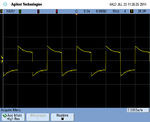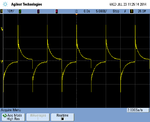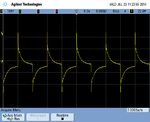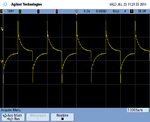colin55
Banned

"When the output of the 555 goes low then the output of the 22nF capacitor goes well below ground (a negative voltage swing) which will reverse-bias the capacitor being tested."
I am simply challenging the statement that the electrolytic under test will get a noticeable, or detrimental negative pulse on it via the tester, in the following:
"Your 555 oscillator is feeding positive and negative AC to the capacitor being tested. Reverse polarity is bad for a polarized capacitor."
and via chuckey:
"So the capacitor under test has AC fed into it. i.e. its reverse biased every half cycle."
It is simply discharged each half cycle.
I am simply challenging the statement that the electrolytic under test will get a noticeable, or detrimental negative pulse on it via the tester, in the following:
"Your 555 oscillator is feeding positive and negative AC to the capacitor being tested. Reverse polarity is bad for a polarized capacitor."
and via chuckey:
"So the capacitor under test has AC fed into it. i.e. its reverse biased every half cycle."
It is simply discharged each half cycle.






